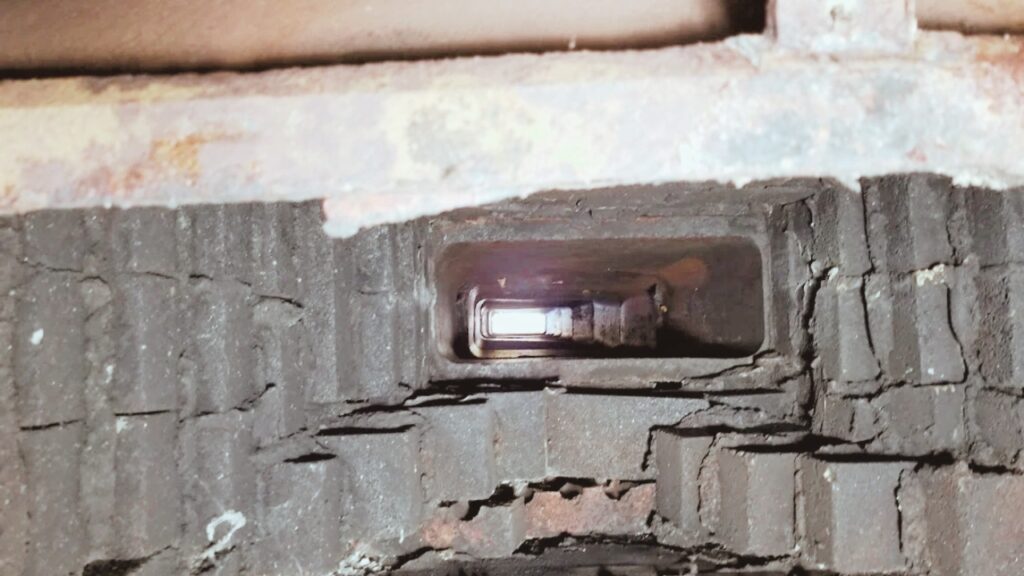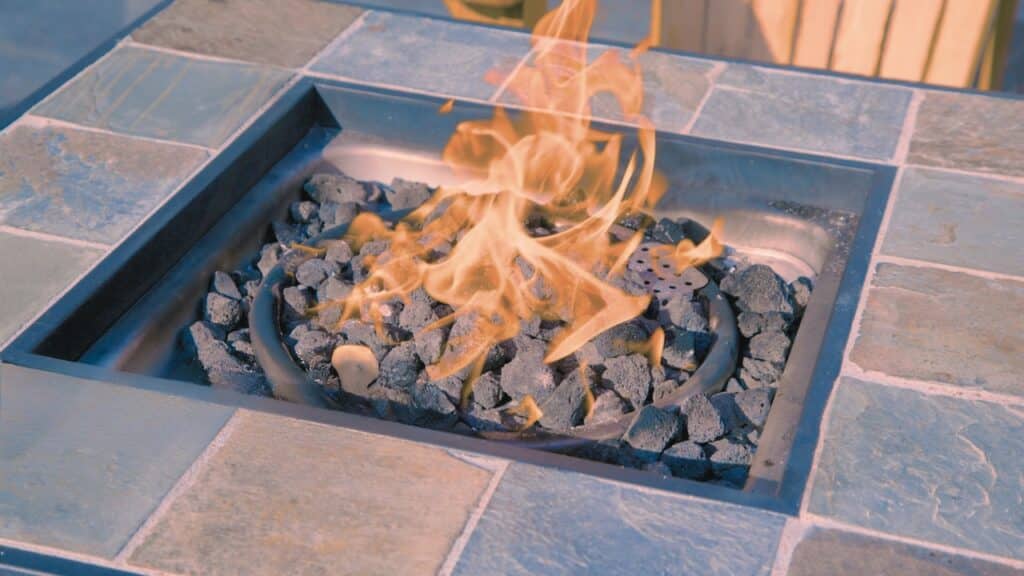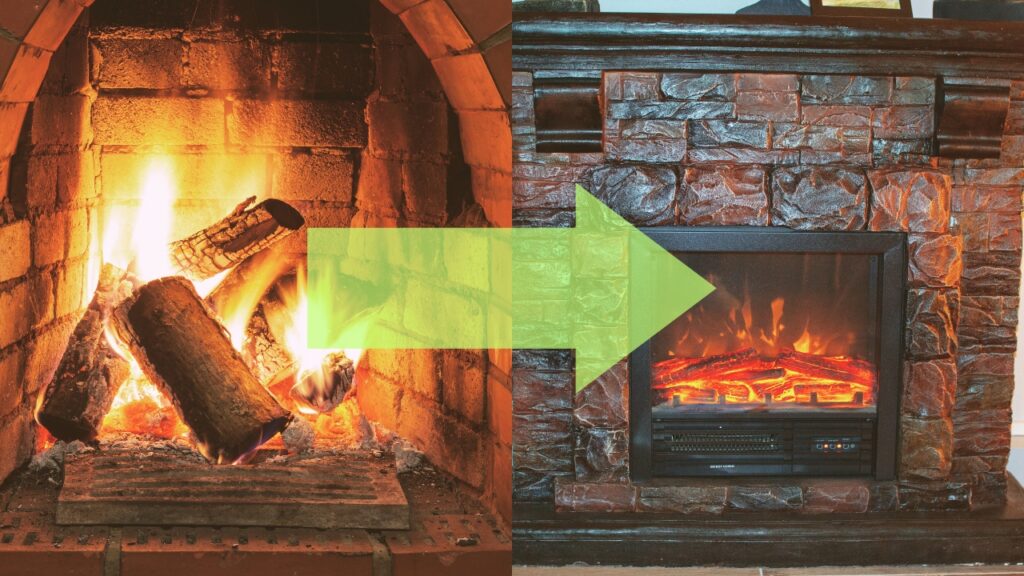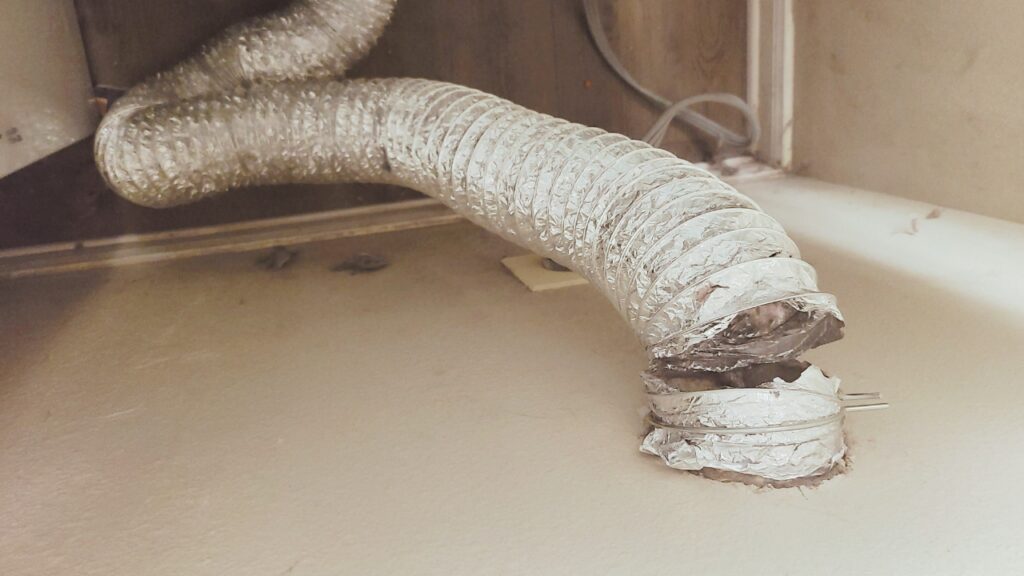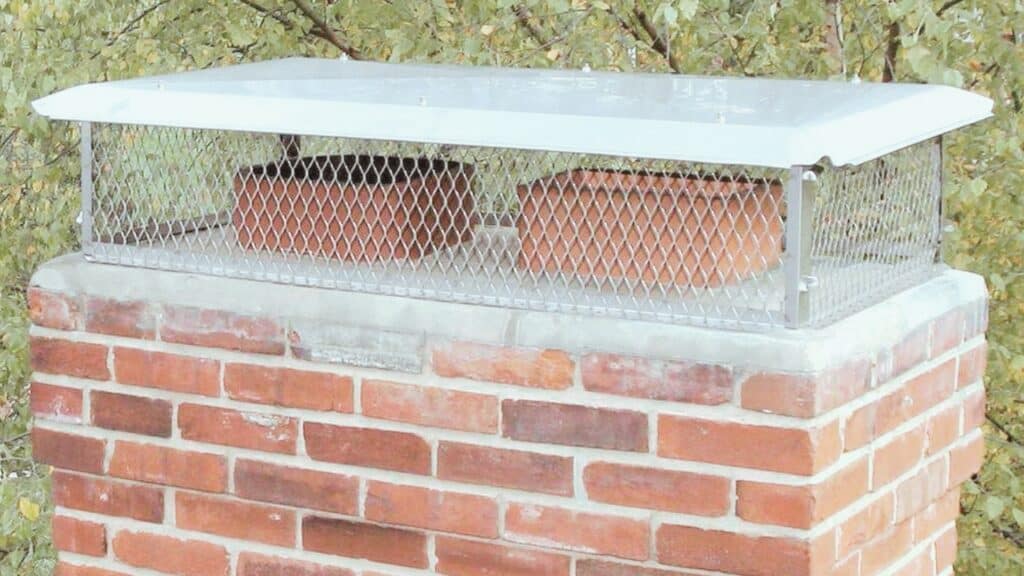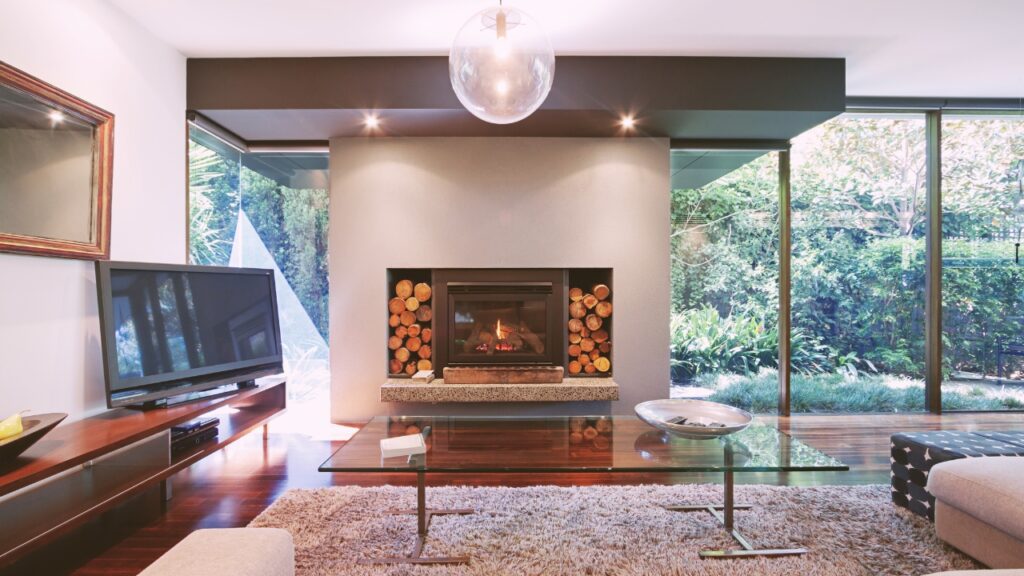A properly designed and well-maintained chimney will have no problem working during rain. But chimneys can sometimes be subject to problems during heavy rains. That is especially true for chimneys that have broken parts or those that haven’t been cleaned, maintained, or inspected in a long time.
Several other factors play a role in how well chimneys work during rainstorms. In this article, we will discuss all such factors and issues. We will also talk about everything you need to know about how rain can affect your fireplace, and what you can do to prevent any damage.
Let’s dive in:
Is It Normal for the Rain to Come Down a Chimney?
Rainwater does not come down a well-maintained chimney. If you notice the following, it usually means that something’s not right:
- Water dripping down your chimney
- Dripping sounds coming from your chimney
- Water stains on nearby walls.
A chimney has many parts that make it a complex system. This also makes it hard to identify the root cause of the problem. To make matters worse, there might be many sources of water leakage. So, hire a professional chimney sweep if you notice rain pouring down your chimney.
A chimney sweep will do a water test in which you spill water into the chimney. This will help find any area/s that might be allowing water to seep inside the chimney.
Why Is Water Coming Through Your Chimney? 4 Common Causes
Knowing the issue is the first step toward fixing it. Here are the 4 most common causes of water leaks discussed in detail:
1. Chimney Flashing Loose or Damaged
Flashing is a metallic waterproof barrier. It helps to keep water from entering the space between the chimney and the roof. It is usually made from aluminum and lasts a long time. But, if damaged, water can seep in and cause leakage. This can affect the strength of your chimney and damage various chimney parts.
Since chimney flashing is exposed to the elements, it degrades over time. Usually, the problem is not severe and there are a few cracks that you can seal off. But in some cases, the problem gets worse. Especially when the chimney flashing has not been maintained in a while or it has been damaged by a bad thunderstorm.
In such cases, the chimney flashing wraps or the cracks are too large that the entire chimney may need to be resealed to repair the problem.
Furthermore, caulking is applied to the chimney flashing to make it waterproof. Eventually, the caulking works itself loose and needs to be reapplied to prevent rain from leaking inside.
2. An Improperly Installed Chimney Cap
A chimney cap provides a covering to the hollow chimney flue. It is the number one thing that keeps rain from directly pouring into your chimney. But it is important to find a cap that fits your chimney and covers it completely.
Moreover, make sure that the nuts and screws are tightly fit. Also, use the screws and bolts provided by the chimney cap manufacturer. Others are likely to loosen over time putting your chimney cap at risk of flying off during strong winds.
You also need to perform regular maintenance of your chimney cap. Since it sits under direct exposure to a harsh environment, it is likely to rust and crack. Regular maintenance and cleaning can slow down the decay and prolong its lifespan.
3. Damage to the Masonry
Like your chimney cap, your chimney’s brick and mortar structure is also exposed to the elements. Over time, the bricks and mortar can become worn down due to weathering or age. This can create cracks and gaps that allow water to seep in and cause leaks.
The problem gets much worse if your chimney structure is positioned such that it is always in a shadow. Because then, whenever it rains, the water is absorbed by the structure and doesn’t evaporate quickly enough. This allows it to seep inside and cause leakage.
Regular inspection and maintenance of your chimney help you discover cracks and damaged spots.
You can consider chimney repointing if your chimney has cracks. The process involves removing old, external mortar and replacing it with new mortar and covering any cracks and spaces. This protects your chimney against water leakage and strengthens its structure.
As an extra precaution, you can apply a double coating of a chimney water repellent. Make sure that it is vapor permeable. It’s important because it’ll allow the chimney to breathe and let any adsorbed water escape.
4. Cracks in Metal Chimney Chase Cover Due to Rust
Prefab chimneys have chase covers or chase tops. They cover the entire chimney stopping rainwater from getting inside the chimney. Since these covers are metallic, they are susceptible to rust. This can create holes or cracks that let the water inside when it rains.
Metal chimney chase covers are more likely to rust if they’re not maintained.
Moreover, a chimney chase cover has a hole in the middle. This is where the chimney pipe and spark arrestor pass.
If the middle part is lower than the rest of the chase cover, it’ll hold water which leads to rust; ultimately causing cracks. The caulk around the hole can also get loose and allow water to penetrate.
How to Identify if My Fireplace Leaking Water When It Rains?
Water leakage is not apparent and often goes unnoticed. But, it’s important to keep an eye out for signs of chimney leakage. That’s because if the leakage is left unattended, it can increase. This can cause irreversible damage to your chimney and its parts.
Here we discuss some of the most common signs that let you know if your fireplace is leaking:
Sounds of Dripping Water
Do you hear water dripping inside your chimney whenever it rains? It’s a sign that there’s a crack or leakage somewhere inside the chimney.
The presence of mold or mildew in your home also suggests water damage has been ignored for too long. If not addressed, mold is likely to reach the HVAC system and spread to the entire home through the ventilation system.
Water Condensation
When it rains, water gets inside a leaking chimney and drips into your fireplace. If that happens, you might see water or condensation inside your fireplace. As a result, you’ll sense a weird, mushy smell from your fireplace. It’ll also make it harder to light a fire because of the moist fireplace.
Damage Inside the Attic
Cracks in your chimney can direct rainwater towards your attic. This can result in serious damage to the interior ceiling. The effects can be seen in the form of deterioration or bubbling of painted walls. The plaster of your attic ceiling is likely to expand as a result of water damage.
If you’ve got anything stored inside the attic, the water is likely to damage it.
If you notice water stains running down the walls near your chimney, the blame usually falls on water leaking from the chimney.
Cracked Masonry
Water can seep inside your cracked masonry and cause deterioration of the mortar joints and damage your chimney. The water damage can be seen in the form of efflorescence i.e. white, power-like formation on the bricks. While cleaning efflorescence is not hard, it doesn’t solve the issue i.e. water leakage.
Another likely outcome of a water-damaged chimney is spalling. When water penetrates the outside structure of your chimney, it causes the brick and concrete structure to flake off.
Damaged Chimney Crown
Your chimney crown is one of the main chimney parts that prevent water penetration inside the chimney. But cracks can start to form inside the chimney crown due to direct exposure to the elements.
These cracks allow for water penetration and need to be sealed to avoid further deterioration.
It’s hard for you to detect any cracks or damage to the chimney crown for the ground. You’ll have to climb up your roof to thoroughly inspect your chimney. If there are any cracks, they will be visible (or, better yet, hire a professional to do a thorough inspection.)
But to prevent cracks from occurring in the first place, call a professional chimney sweep to waterproof your chimney crown.
Rust
When the water reaches inside the chimney it results in the oxidation of various parts of the chimney and firebox. You’ll see spots of rust on various chimney parts made from metal that’ll corrode these parts.
Why Does My Chimney Smell When It Rains?
If you notice a strange, foul smell coming from your chimney after it rains, you’re not alone. There are various reasons for that to happen.
We know that the airflow inside your chimney depends upon the pressure differential. If the air pressure inside is greater than the outside air pressure, the air will flow out of your chimney and vice versa.
After heavy rainfall, the pressure outside is generally greater. This forces outside air to enter your home through the chimney. A dirty chimney has deposits of creosote, soot, debris, etc. that have a foul smell. The outside air brings that smell along when it enters your house.
It could also be that there’s a leak inside your chimney that allows water to drip inside. With it, soot and creosote deposits are washed into the house and give off a bad smell.
If you’ve got a leakage problem for a while, mold or mildew can start to form inside your chimney. The rainwater, when it enters your chimney, gets mixed with the moisture from the rain; resulting in a musty smell.
What Keeps Rain From Dripping Down the Chimney?
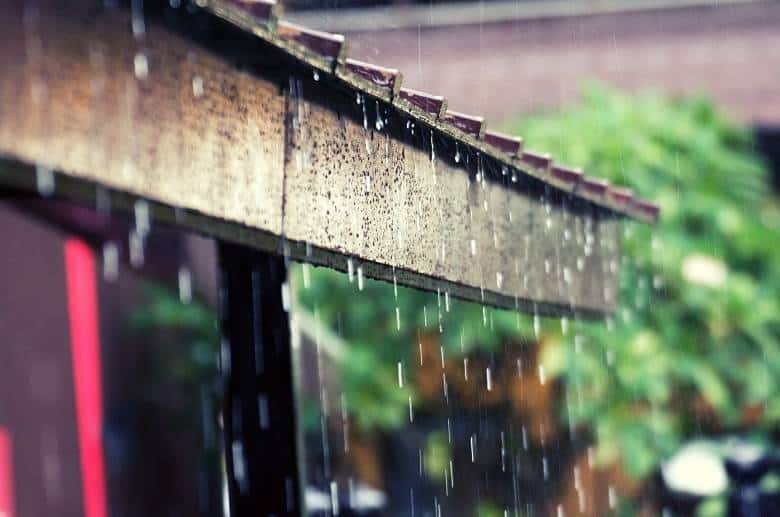
Chimney Cap
The first thing that blocks rainwater from entering your chimney is a chimney cap. A chimney cap is essentially a metallic cover that fits securely on top of the chimney. It’s installed in a slightly slanted fashion that allows it to divert the downpour of rain away from the chimney.
Chase Cover for Prefabricated Chimneys
Prefabricated Chimneys have a chase cover or top instead of a chimney cap. Made from metal, brick, wood, or vinyl, a chase cover is rectangular and covers the top of a factory-built chimney.
If you’ve got a prefab chimney, having a tightly fit chase cover will prevent a downpour of rain from coming inside your chimney and causing damage.
Chimney Cowling
A chimney cowl is a bonnet-shaped part that’s placed on top of a chimney flue or pot. It fits over the top of the chimney and has small openings that allow air to pass through while blocking out any water.
Keep in mind that installing the wrong type of cowl may cause further issues instead of solving them.
Chimney Damper
A chimney damper is another essential component that can help you deal with the downpour of rain. If it’s raining outside and your fireplace is not in use, close your chimney damper.
But if you want to use your fireplace, always open the damper before lighting the fire. Because if the damper is closed, the smoke will have no way to escape and your room will fill up with smoke.
Waterproofing
To protect your chimney exterior from water damage you can apply a coating of a water repellant. But, make sure that it is vapor permeable to allow for water vapors absorbed in the chimney to escape.
Annual Inspection
During inspection problems and damage are found and fixed. This helps prevent further damage or crack creation.
That is why the National Fire Protection Association (NFPA) recommends annual chimney inspections.
The Takeaway
A well-maintained and efficient chimney will have no problem working during heavy rains. But, the downpour of rain can enter your chimney and can cause serious damage if your chimney has:
- cracks,
- bad chimney flashing,
- broken parts e.g. broken chimney cap or chimney crown.
It’s best to schedule annual inspections. And always ensure that your chimney parts are in excellent working condition.

